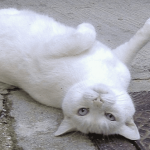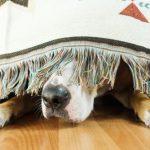 Technology
Technology  Technology
Technology  Our World
Our World 10 Ways Icelandic Culture Makes Other Countries Look Boring
 Misconceptions
Misconceptions 10 Common Misconceptions About the Victorian Era
 Mysteries
Mysteries 10 Strange Unexplained Mysteries of 2025
 Miscellaneous
Miscellaneous 10 of History’s Most Bell-Ringing Finishing Moves
 History
History 10 Great Escapes That Ended Right Back in Captivity
 Weird Stuff
Weird Stuff 10 Fascinating Things You Might Not Know About Spiders
 Food
Food 10 Everyday Foods You Didn’t Know Were Invented by the U.S. Military
 History
History 10 Odd Things Colonial Americans Kept at Home
 Weird Stuff
Weird Stuff 10 Superstitious Beliefs That Once Consumed Entire Cultures
 Technology
Technology 10 Scientific Breakthroughs of 2025 That’ll Change Everything
 Our World
Our World 10 Ways Icelandic Culture Makes Other Countries Look Boring
 Misconceptions
Misconceptions 10 Common Misconceptions About the Victorian Era
Who's Behind Listverse?

Jamie Frater
Head Editor
Jamie founded Listverse due to an insatiable desire to share fascinating, obscure, and bizarre facts. He has been a guest speaker on numerous national radio and television stations and is a five time published author.
More About Us Mysteries
Mysteries 10 Strange Unexplained Mysteries of 2025
 Miscellaneous
Miscellaneous 10 of History’s Most Bell-Ringing Finishing Moves
 History
History 10 Great Escapes That Ended Right Back in Captivity
 Weird Stuff
Weird Stuff 10 Fascinating Things You Might Not Know About Spiders
 Food
Food 10 Everyday Foods You Didn’t Know Were Invented by the U.S. Military
 History
History 10 Odd Things Colonial Americans Kept at Home
 Weird Stuff
Weird Stuff 10 Superstitious Beliefs That Once Consumed Entire Cultures
Ten Animal Bodily Fluids and Their Extraordinary Uses
From nourishing worm milk to poisonous moth ooze, the animal kingdom is home to all kinds of hidden marvels, and animal secretions are no exception. Nature is brimming with astonishing juices. The fluids take on various roles that leave some bowled over in wonder, while others feel a little nauseous. Here are ten of the most extraordinary case studies of urine, milk, sweat, blood, poison, and more that biology has to offer.
Related: 10 Silly Beliefs People Have about Animals
10 Whale Urine Helps Keep Our Oceans Healthy
Beneath the ocean blue, whale pee is an unlikely substance that helps tropical life thrive. So says a 2025 study published in Nature Communications. Whale waste fluid is packed with nutrients like nitrogen and phosphorus that are vital to keep marine life ticking over.
During the summer, baleen whales feast near the poles, where the water is rich in nutrients. But when breeding season comes around, the ocean giants migrate to the tropics, where the nutrient level is usually much lower. Researchers calculated that whales deposit almost 3,800 tonnes of nitrogen a year through a mix of urine, carcasses, and placentas. They reckon the number could have been up to three times higher before commercial whaling killed so many creatures.[1]
9 The Mystery Behind Square Wombat Poop
Wombats are the only known species to poop cubes. The Aussie marsupials can produce as many as 100 tiny blocks a night, collecting them in piles to mark their territory.
For years, scientists were baffled by the cube-shaped feces. Patricia Yang, an assistant professor at Georgia Institute of Technology, was determined to find out. “The first thing that drove me to this is that I have never seen anything this weird in biology,” she told reporters. “That was a mystery.”
Researchers cut into dead wombats to study their digestive tracts. They found that the intestinal walls changed in elasticity, contracting at different speeds to shape the poop into cubes. For most of the journey, the feces is in liquid form; only in the last quarter does it take on a solid state. Scientists say the unique shape stops the stacks of feces from rolling away.[2]
8 Wormy Amphibian Feeds Milk to Its Babies
Meet the caecilian, a creature that looks like an earthworm and produces milk for its children. Scientists once thought that mammals were the only animals that nursed their young. However, a 2024 study by biologists in Sao Paulo showed that amphibians lactate too. The shy wrigglers burrow into tropical soil and secrete a fluid rich in fats and sugars. Videos of caecilians at feeding time show the babies clustered around the tail, lapping away at the ooze.
The caecilian shares a similar ancestor to frogs and salamanders, but hundreds of millions of years underground left them legless and almost blind. Instead, they evolved to produce milk. Scientists were astonished to learn that this came about without any influence from mammals. As researcher Marta Antoniazzi put it, “Nature is very creative. Sometimes, it gives the same solution to different groups of animals.”[3]
7 Aphids Fend Off Moth Attacks with Chemical Ooze
Aphids live under constant threat of attack. Some groups reside on plants in tiny structures known as galls. But they have competition. Nolid moth larvae often come crashing through the wall, looking to kick out the colony, so they steal the gall for a tasty treat.
But the aphids refuse to go down without a fight. Any time a moth breaks in, the little sap-suckers spray white fluid at the invader. Young aphid nymphs use the secretion to repair the breach in the gall. The colony often loses members in the process. Some get stuck in the fluid as it hardens, others are left outside. By releasing the fluid, nymphs can lose up to two-thirds of their body mass, which often kills them. But they are willing to make the sacrifice so that the group can survive.
Scientists say this remarkable process has a lot in common with the mammal immune system. The aphids act like blood cells gathering at a wound to form a scab and protect the body from infection. In a 2019 study, researchers in Japan described the aphid system as a form of “social immunity.”[4]
6 Dolphins Find Their Pals by Tasting Their Urine
Even without sight or sound, dolphins can single out their buddies. How do they do this? Using the signature taste of their urine. While humans might identify our friends from their scent, marine creatures recognize their nearest and dearest by tasting their pee. It helps them navigate complex social groups in the wild.
Researchers at the University of St. Andrews studied how bottlenose dolphins react to urine samples from peers compared to samples from strangers. As Professor Vincent Janik explained, “Dolphins explored urine samples for longer if they came from known animals or when they were presented together with the dolphin’s unique and distinctive signature whistle, an acoustic identifier that works like a name. This shows not only that they can tell animals apart by taste but also that they recognize animals across their senses, hinting at a complex representation of familiar animals in a dolphin’s brain.”[5]
5 Hippos Fend Off Solar Rays and Disease with Sticky Red Sweat
Hippos are sometimes mistaken for sweating blood. They ooze a sticky, red liquid from glands in their skin that, to the untrained eye, looks like a different bodily fluid. But their viscous sweat is actually quite a nifty substance, acting as an antibacterial sunscreen. The enormous guzzlers need to eat masses of greenery to sustain themselves. They aim to fill up at night when the weather is cooler, but sometimes, there are not enough hours to consume such an enormous amount of food.
So, the African gluttons have evolved to keep cool with a protective ooze. The sweat contains two colored chemicals: norhipposudoric acid and hipposudoric acid. Both block the sun, while the second, redder acid also works as an antiseptic.[6]
4 Wood Tiger Moth Oozes Different Poisons for Different Attackers
When it comes to poisons, the wood tiger moth likes to keep its options open. The colorful flutterer is the first known species to produce two different toxins depending on the predator. If the insect comes under attack, it emits liquid from either its abdomen or neck.
In a 2017 study, scientists in Finland found the neck ooze contained the chemical SBMP, which keeps birds at bay with its stench. When birds attack moths, they often target the neck. The team found that ants reacted to the abdomen poison, which makes sense as they like to attack on a surface while the moth rests. Biologists reckon the midriff slime could be leftover gloop from the pupa.[7]
3 Sharpshooter Insect Flings Out Pee at Rapid Speed Using Its Anus
The sharpshooter insect projectile peeing is one of the fastest events in the animal kingdom. The glassy bugs are only a centimeter long, but they fling out their waste at a ferocious pace. Sharpshooter urine can reach speeds of 200 meters per second squared, far quicker than a cheetah running.
The sharpshooter consumes an extraordinary amount of liquid. In a day, it guzzles up to 300 times its weight by sucking the liquid out of plants. After it has taken out the nutrients, the bug fires out the waste fluid in pointed droplets. Biophysicists explain that beads gather at the insect’s anus, where two tiny hairs hurl the urine away.[]
Engineers are now trying to design new ways to move tiny liquid drops based on the sharpshooter’s urine ejection system. They say the bug’s anus could inspire new types of printers or new ways to study DNA.[8]
2 Glass Frogs Collect Blood in the Liver to Turn Transparent
The glass frog is a remarkable creature. The amphibians are no bigger than marshmallows and live in tropical climates. Most peculiar is their ability to become see-through while they sleep. The elusive croakers turn themselves 61% transparent to hide from predators, and for a long time, nobody could explain how they did it.
In 2022, researchers in the US found glass frogs cram blood cells into their livers to become see-through. The organ doubles in size to accommodate up to 89% of the animal’s cells. Then, when they need to hunt or mate, they let the blood circulate freely again, and the liver contracts. Scientists hope to find a way to apply the discovery to human medicine and reduce the risk of blood clots.
“They somehow pack most of the red blood cells in the liver, so they’re removed from the blood plasma,” explained Jesse Delia from the Museum of Natural History in New York. “They’re still circulating plasma… but they do it somehow without triggering a massive clot.”[9]
1 Roundworm Mothers Secrete Organ Milk Out of their Vulvas
Roundworm mothers feed their young by squirting a milky fluid from their vulvas. Nematodes sacrifice their innards to help their offspring grow strong and healthy.
The wriggling critters are only a millimeter long, with both male and female reproductive organs. When they become too old to have more children, the worms start to consume their internal organs, pulping them into a nourishing fluid. For some time, scientists struggled to understand why they did this. Maybe it was some aging disease causing them to squeeze their mushed-up guts out of their vulvas.
In a 2021 study, biologists from University College London explained how the unique feeding process works. As Dr. Carina Kern told reporters: “Once we realized that the post-reproductive worms were making milk, a lot of things suddenly made sense. The worms are destroying themselves in the process of transferring nutrients to their offspring. And all those unfertilized eggs are full of milk, so they act like milk bottles to help with milk transport to feed baby worms.”[10]








